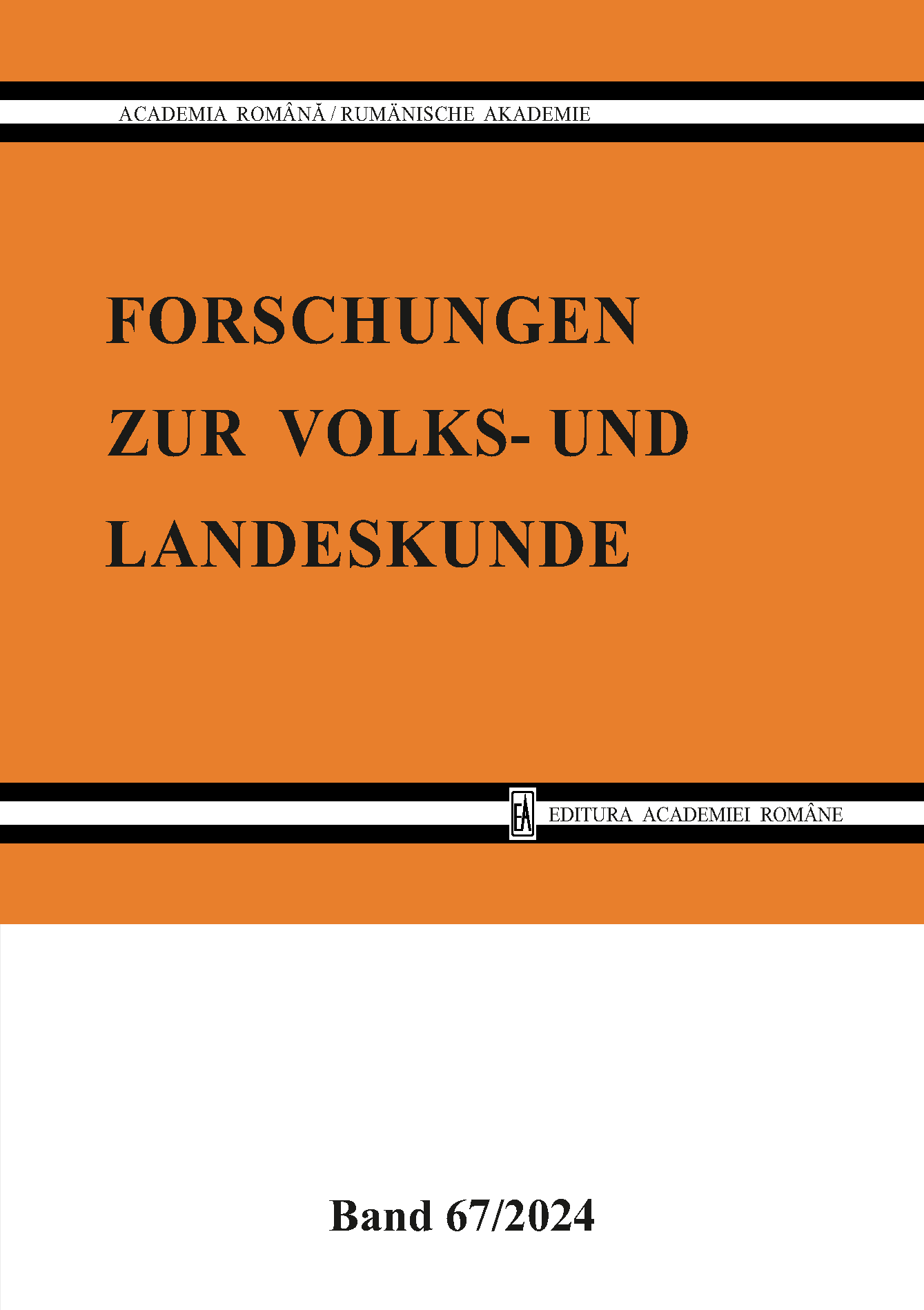LOKALE NUTZER, EUROPAWEITE VERBREITUNG. KOPFSCHMUCK AUS DER MITTELALTERLICHEN NEKROPOLE VON CAPIDAVA
Local Users, European Circulation. Jewellery for the Head Discovered in the Medieval Necropolis from Capidava
Author(s): Claudia Urduzia, Zeno Karl PinterSubject(s): History, Archaeology, Middle Ages
Published by: Editura Academiei Române
Keywords: earrings; temple rings; medieval jewellery; Capidava; Dobruja; 10th century;
Summary/Abstract: The history of the Capidava fortress (Constanța County), located in the historic region known as Dobdrudja, begins in the 2nd century A.D. during the reign of the Roman emperor Trajan, when Capidava was erected and ends in the 11th century, when the fortress was destroyed and abandoned during successive Pechenegs’ and Oghuz / Uzes’s attacks. The ruins of the fortress remained visible for a long time and were known to the locals, as proven by the Turkish name of the settlement established nearby in the 18th century (Kale-Köy – “the village of the fortress”, “the village from the fortress”). The archaeological research of the fortress began in 1924 led by Grigore Florescu, one of the assistants of the historian Vasile Pârvan, and continued with only short interruptions until today. The research targeted both the area between the preserved walls and outside of them, nearby. It’s here, outside the walls, east and north-east of the fortress, where the medieval necropolis of Capidava was found, belonging to the settlement once situated inside the walls. The medieval necropolis was sporadically researched starting with 1958. In 2010, the researches of terrace B (found 150 meters east of the main gate of the fortress), intended to establish the general stratigraphy and to identify the connections with the intra muros habitation, led to the discovery of the eastern edge of the necropolis. Following this, the systematic research of terrace B started and it is still in progress. In 2015, preceding the construction of a Touristic Information Centre and its access alleys, another area of the necropolis found 50 meters north of the systematic research was investigated, this time in a preventive research. Following these researches in the two mentioned areas 125 medieval funerary features were brought to light up to now, among which 37 had inventory. Among the inventory items there were discovered earrings and temple rings, beads, pendants, bells, bracelets, rings, buttons, appliques and amulets, buckles. The paper below focuses on head jewellery (earrings and temple rings) discovered in the medieval necropolis from Capidava. During the recent researches in the two mentioned areas of the necropolis from Capidava, a number of 38 earrings and temple rings were recovered until now. From these 16 were simple rings (12 made of bronze, 2 of silver and 2 of glass), 12 earrings with grape cluster or column shaped pendants, most of them with a lunular lower part (all of bronze), 4 with biconical mounting (also of bronze) and 6 with drop shaped pendants (of the same material). All these items found in Capidava have numerous parallels both in Romania (especially in Dobrudja and Transylvania), and in all the Eastern half of Europe. The dating of these parallels towards the end of the 9th century and especially in the 10th century testify for a similar dating of the items from Capidava, mainly in the 10th century, with partial extents in the adjacent centuries. Of course, the analysis of all the types of finds and the absolute dating of some of the features will allow a better dating of the entire necropolis.
Journal: Forschungen zur Volks- und Landeskunde
- Issue Year: 2024
- Issue No: 67
- Page Range: 7-21
- Page Count: 15
- Language: German
- Content File-PDF

